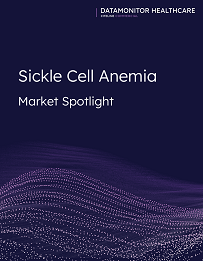Report Library
All Reports
Datamonitor Healthcare CV&Met: Sickle Cell Anemia Market Spotlight
May 06, 2025
Sickle cell disease (SCD) refers to a group of genetic red blood cell (RBC) disorders characterized by the presence of an abnormal hemoglobin, called hemoglobin S (HbS) or sickle hemoglobin, in the RBCs. In individuals with SCD, the hemoglobin molecules have a tendency to polymerize within the RBCs and deform them into a sickle shape, leading to vaso-occlusive events and increased hemolysis. The sickle-shaped cells block the blood flow and therefore obstruct the supply of oxygen to the tissues, which can lead to severe problems such as infections, eye problems, stroke, and episodes of pain. SCD is an autosomal recessive disorder and is inherited either in a homozygous or double heterozygous state. If inherited in the homozygous state with two HbS genes, it is termed as sickle cell anemia, which is the most common and severe form of SCD. This occurs when valine substitutes glutamic acid at the sixth position on the beta-globin gene, resulting in the production of a defective HbS. However, if an individual inherits one defective gene and one normal gene from their parents, the individual will be a carrier of the sickle cell trait and will not have SCD, but can pass the defective gene to their offspring. Other forms of SCD include hemoglobin SC, hemoglobin S-beta zero-thalassemia, HbS beta plus-thalassemia, hemoglobin SD, and hemoglobin SE, of which hemoglobin SC and HbS beta plus-thalassemia are most common.
This Datamonitor Healthcare report contains a Market Spotlight module.
| Indications Covered: | Sickle Cell Anemia |
